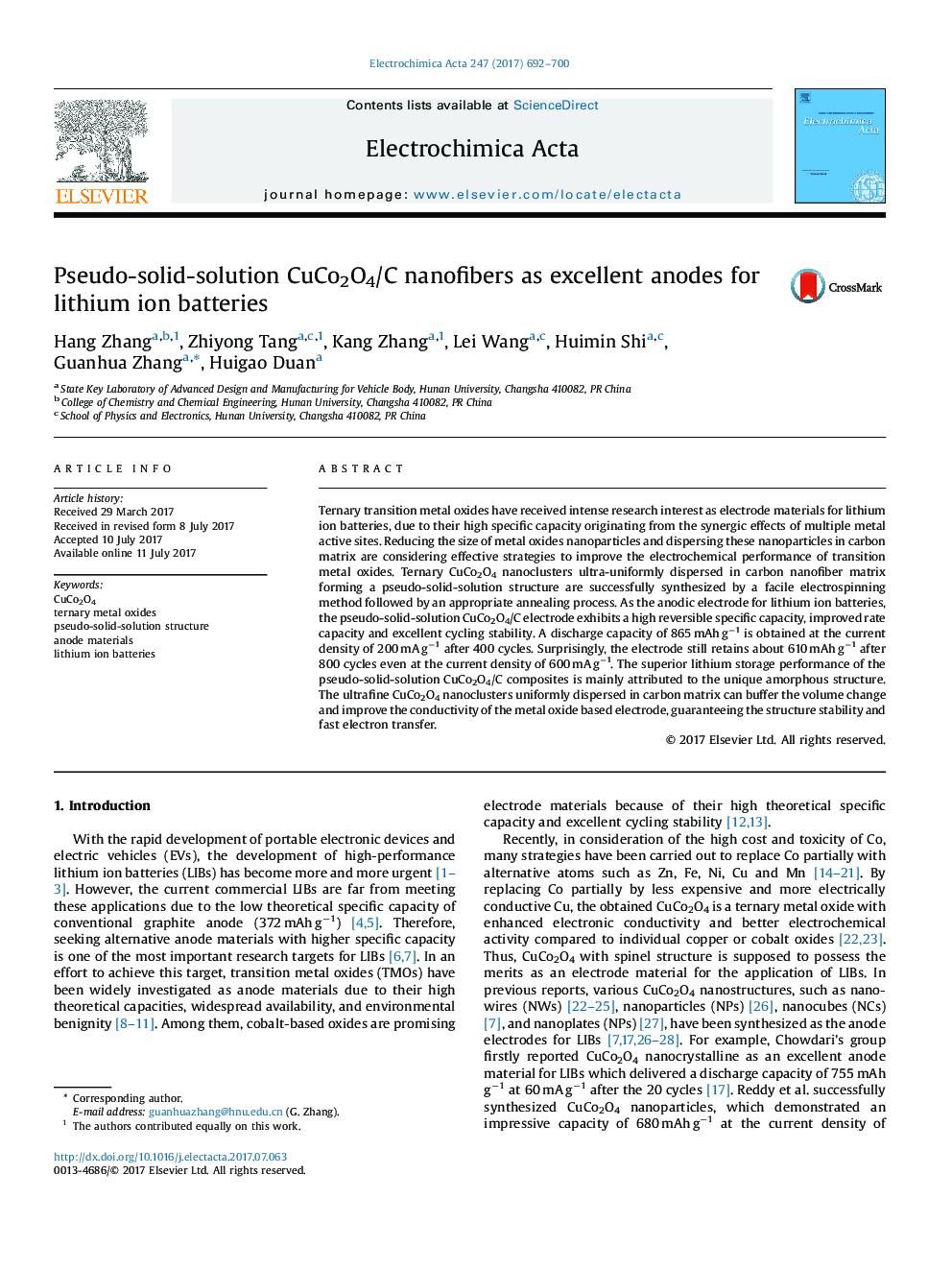| Article ID | Journal | Published Year | Pages | File Type |
|---|---|---|---|---|
| 6471082 | Electrochimica Acta | 2017 | 9 Pages |
Ternary transition metal oxides have received intense research interest as electrode materials for lithium ion batteries, due to their high specific capacity originating from the synergic effects of multiple metal active sites. Reducing the size of metal oxides nanoparticles and dispersing these nanoparticles in carbon matrix are considering effective strategies to improve the electrochemical performance of transition metal oxides. Ternary CuCo2O4 nanoclusters ultra-uniformly dispersed in carbon nanofiber matrix forming a pseudo-solid-solution structure are successfully synthesized by a facile electrospinning method followed by an appropriate annealing process. As the anodic electrode for lithium ion batteries, the pseudo-solid-solution CuCo2O4/C electrode exhibits a high reversible specific capacity, improved rate capacity and excellent cycling stability. A discharge capacity of 865 mAh gâ1 is obtained at the current density of 200 mA gâ1 after 400 cycles. Surprisingly, the electrode still retains about 610 mAh gâ1 after 800 cycles even at the current density of 600 mA gâ1. The superior lithium storage performance of the pseudo-solid-solution CuCo2O4/C composites is mainly attributed to the unique amorphous structure. The ultrafine CuCo2O4 nanoclusters uniformly dispersed in carbon matrix can buffer the volume change and improve the conductivity of the metal oxide based electrode, guaranteeing the structure stability and fast electron transfer.
